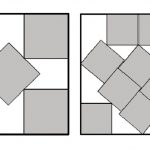It takes a lot of energy for machines to learn – here’s why AI...
This month, Google forced out a prominent AI ethics researcher after she voiced frustration with the company for making her withdraw a research paper.
The...
AI-powered microscope could check cancer margins in minutes
When surgeons remove cancer, one of the first questions is, "Did they get it all?"
Researchers from Rice University and the University of Texas MD...
Machine learning helps search for superhard materials
Superhard materials are in high demand in industry, from energy production to aerospace, but finding suitable new materials has largely been a matter of...
What’s the best way to cut Christmas cookies?
At some point in life, most people have stood over a rolled-out slab of cookie dough and pondered just how to best cut out...
Scientists find how to predict heart attack and stroke from belly fat
In a new study, researchers found that AI belly fat measures could predict heart attack and stroke effectively.
They found an automated deep learning analysis...
AI can detect COVID-19 in the lungs like a virtual physician, study finds
In a new study, researchers found that artificial intelligence (AI) can be nearly as accurate as a physician in diagnosing COVID-19 in the lungs.
They...
This new data storage way is 50 times faster
Scientists have developed a way to use magnetic materials for data storage that is about 50 times faster than previous attempts.
The record-breaking accomplishment could...
Scientists create world’s smallest memory device
Faster, smaller, smarter and more energy-efficient chips for everything from consumer electronics to big data to brain-inspired computing could soon be on the way...
New wireless chip shines light on the brain
Researchers have developed a chip that is powered wirelessly and can be surgically implanted to read neural signals and stimulate the brain with both...
New radar helps self-driving cars navigate safely in bad weather
A new kind of radar could make it possible for self-driving cars to navigate safely in bad weather.
Electrical engineers at the University of California...










